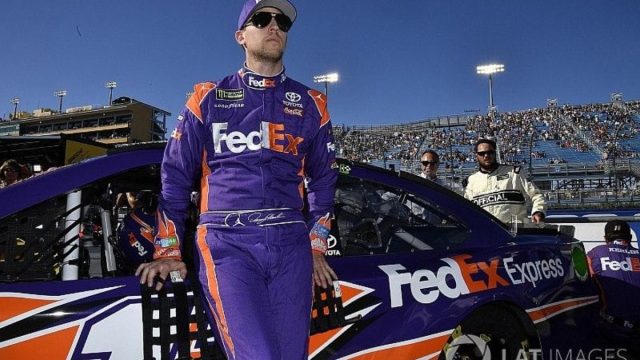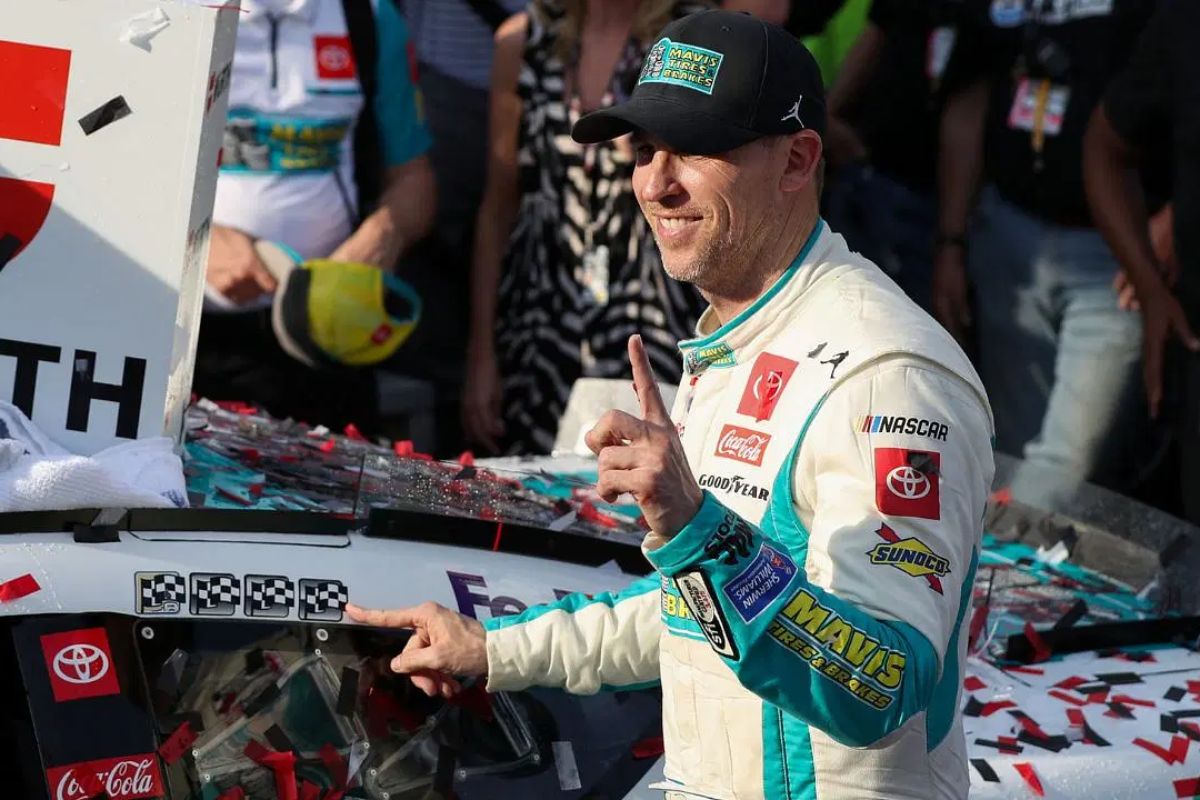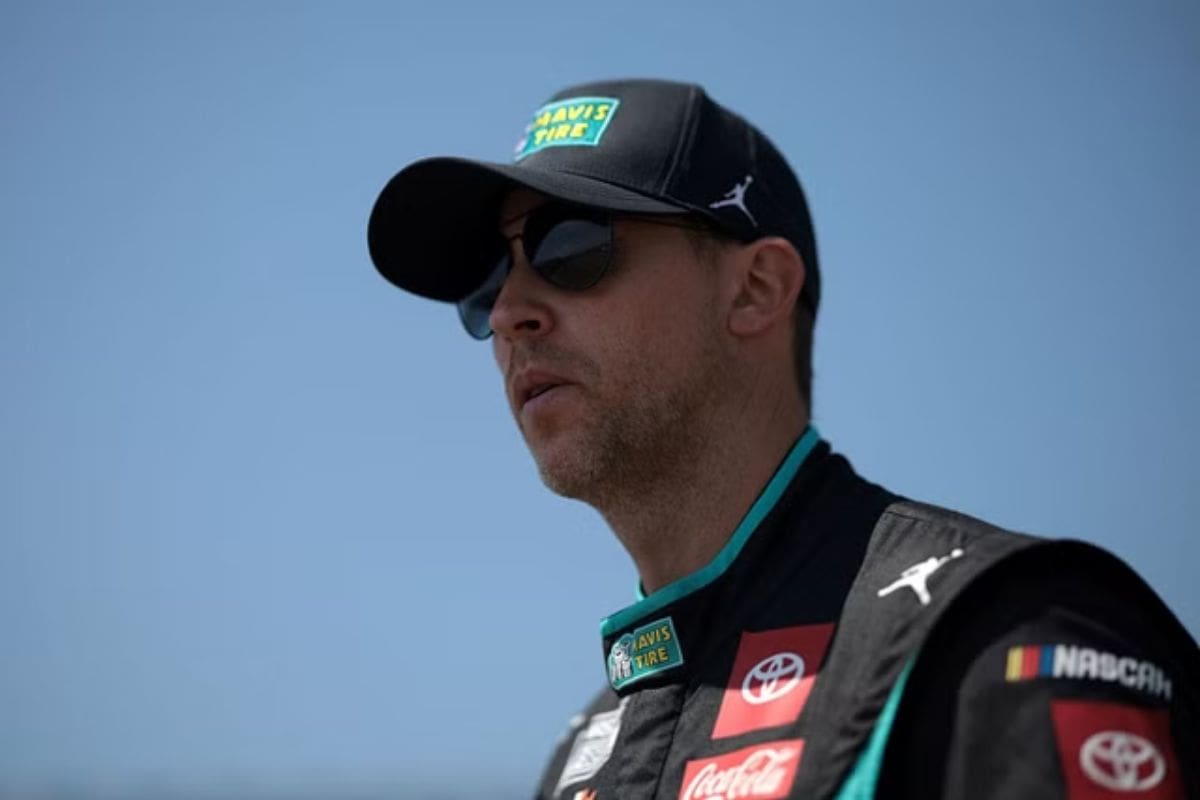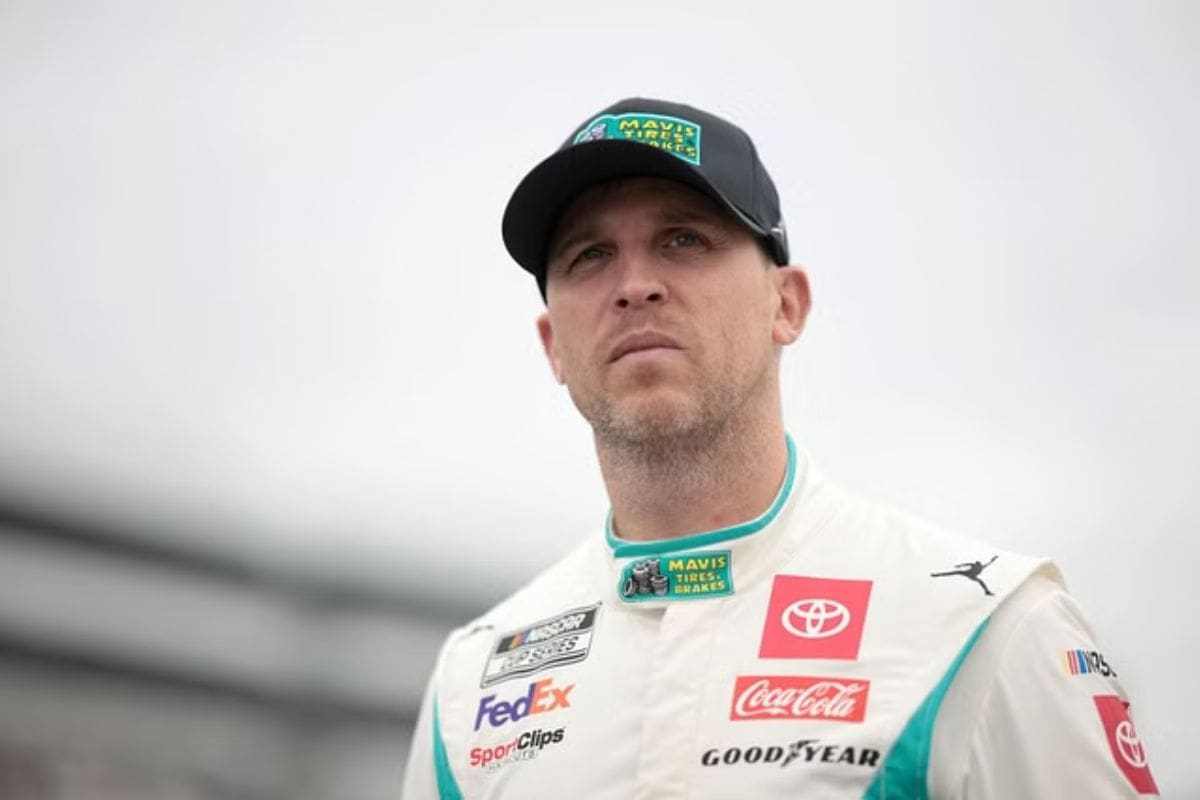Denny Hamlin Slams Next Gen Car: Denny Hamlin‘s recent critique of the Next Gen car highlights notable concerns regarding its performance in close-quarters racing, which he describes as severely lacking. He contrasts this model with the Xfinity Series car, noting its superior aerodynamics and improved driver engagement. Hamlin’s frustrations reflect a broader dissatisfaction with the Cup Series‘ design, suggesting a misalignment between expectations and reality. As discussions around potential changes intensify, one must consider how these insights might influence the future of competitive racing. What implications could these critiques have for the sport’s evolution?
Key Highlights
- Denny Hamlin criticizes NextGen cars for their poor performance in close quarters racing, calling them the ‘worst’ in this aspect.
- He voiced concerns about significant design flaws to NASCAR officials prior to the launch, which were not adequately addressed.
- The uniformity of NextGen components leads to homogenized performance, limiting competitive overtaking opportunities in races.
- In contrast, Xfinity Series cars offer better aerodynamics, allowing for more dynamic racing and enhanced driver engagement.
Denny Hamlin’s Critique of NextGen Cars
Denny Hamlin’s assessment of the NextGen cars highlights a considerable concern regarding their impact on competitive racing, particularly emphasizing the challenges drivers face in overtaking rivals on the track. Hamlin asserts that the design and specifications of these cars create an environment where passing becomes increasingly difficult, especially in traffic scenarios. This perspective is critical, as overtaking has long been a cornerstone of NASCAR’s competitive nature.
The uniformity of the NextGen cars, attributed to their components being sourced from single vendors, has led to a homogenization of performance across the field. While this was intended to foster parity, it inadvertently stifles the variability that allows individual driver skill to shine through. Hamlin’s comparison with the Xfinity Series cars highlights a notable shift; the Xfinity models appear to facilitate more dynamic racing, allowing drivers greater opportunities to exploit their skills in overtaking actions.
Hamlin’s critique points to a broader issue within the NASCAR framework: the essence of competition may be compromised if drivers are unable to effectively challenge one another. The difficulty in passing at comparable speeds diminishes the excitement and tactical elements that fans and drivers similarly cherish. As Hamlin articulated during his podcast, the essence of racing is at stake, calling into question whether the NextGen car fulfills its intended purpose of enhancing the sport’s competitive spirit.
Denny Hamlin’s Frustration with NextGen Car Design
Frustration permeates Denny Hamlin‘s comments regarding the NextGen car design, particularly as he expresses disbelief over its shortcomings in traffic situations, which have considerably hindered competitive racing. Hamlin’s straightforward assessment reveals a striking dissatisfaction with the vehicle’s performance, labeling it as the ‘worst‘ in NASCAR when competing in close quarters. Such a characterization highlights a critical failure in design that has considerable implications for race dynamics.
“We all know that these NextGen cars are terrible in traffic. They are the worst cars in NASCAR in traffic. When we designed them, we designed a car that is (the) worst that it’s ever been in traffic.”-(denny)
Hamlin’s inquiries to NASCAR officials before the car’s launch indicate a proactive approach to understanding potential flaws. His repeated questioning—three times, no less—emphasizes a foreboding sense of uncertainty that he felt even before the cars hit the track. The subsequent realization by authorities that there were considerable issues only exacerbates his frustration, leading him to assert that the two-year development period should have yielded better results.
“I asked them three times before this car came out, ‘Are you sure it’s right?’ In December, before they launched the car they put it on track with another car and see that ‘Oh sh*t, we got a problem’ No kidding, you got two years to figure this out. God, it’s frustrating as hell.”-(denny)
Next Gen 👎
Xfinity 👍@DirtyMoMedia | @dennyhamlin pic.twitter.com/Db3y0qG4NM— Matt Bussa (@MattBussa) July 24, 2024
The essence of Hamlin’s critique lies in the car’s inability to facilitate competitive racing, a fundamental aspect of NASCAR’s appeal. As he succinctly states, the sheer lack of foresight in the design process is disheartening. This situation not only impacts drivers like Hamlin but also the broader fan experience, as it detracts from the thrilling, unpredictable nature of stock car racing. Consequently, Hamlin’s frustration is not merely personal; it reflects a larger dissatisfaction with the NextGen car’s role in the sport’s evolution.
Denny Hamlin’s View on Xfinity vs. Cup Series Cars
While the NextGen car design has drawn criticism for its limitations in competitive racing, the contrast with NASCAR Xfinity Series cars highlights a more favorable dynamic for drivers, particularly in how they can engage with one another on the track. Denny Hamlin has articulated the detailed differences between these two classes of vehicles, emphasizing that while they may appear similar externally, their performance characteristics diverge markedly.
“They’re able to pass. If a good car is able to pass… then, they’re able to manipulate the car in front of them instead of getting manipulated by the car in front of them.”-(hamlin)
One of the most critical distinctions lies in aerodynamics. Xfinity Series cars allow drivers to control the drafting effect more effectively, capitalizing on the lead car’s wake. This creates a lower-pressure zone that enables trailing drivers to challenge the lead car’s stability, thereby facilitating overtaking tactics.This dynamic builds a more competitive atmosphere, where drivers can actively influence race outcomes rather than being passive participants.
Moreover, the differences in wheelbase length and downforce further contribute to the Xfinity Series’ ability to deliver more dynamic racing. The design of Xfinity cars encourages a level of interaction that is often stifled in the Cup Series due to the NextGen car’s restrictions.
Hamlin’s Insights on Race Craft and Aerodynamics
Insights into race craft and aerodynamics reveal a striking contrast between the challenges faced in the Cup Series and the opportunities presented in the Xfinity Series, as drivers navigate the complexities of downforce and vehicle control.
Denny Hamlin’s observations highlight a crucial aspect of racing dynamics: in the Cup Series, proximity to other cars greatly disrupts aerodynamic performance.
“That is the big difference, (In) Cup, the closer you get to them, your car takes off. You lose all downforce; you’re done. The closer you get to the car in front of you in the Xfinity, as soon as you get close to the rear of the car, they start losing rear downforce and then they get off the bottom.”-(hamlin)
In contrast, the Xfinity Series allows for a more layered approach to race craft. Hamlin noted that when drivers close in on the rear of another vehicle in this series, they begin to experience a loss of rear downforce, prompting a need for tactical adjustments. This scenario necessitates an acute understanding of vehicle dynamics and the skill to adapt in real time. Mastery in this environment hinges on years of experience and an intimate grasp of how aerodynamic shifts influence car behavior.
Ultimately, Hamlin’s insights highlight the importance of adaptability in motorsport. While the Cup Series presents a steeper learning curve regarding air dynamics, the Xfinity Series fosters a more accessible platform for drivers to refine their skills, presenting a unique blend of opportunity and challenge. This distinction is crucial for aspiring drivers seeking to improve their race craft in a competitive landscape.
News in Brief: Denny Hamlin Slams Next Gen Car
The critique of the Next Gen car by Denny Hamlin emphasizes important concerns regarding its design and impact on competitive racing.
The contrast drawn with the Xfinity Series highlights the deficiencies in aerodynamics and driver engagement within the Cup Series.
This dissatisfaction reflects a broader need for reassessment of vehicle specifications to improve racing dynamics.
Ultimately, addressing these issues may be essential for revitalizing the excitement and competitiveness that fans and drivers similarly seek in the sport.
ALSO READ: Denny Hamlin’s Plans for NASCAR Olympic Break: “I’m So Done”



